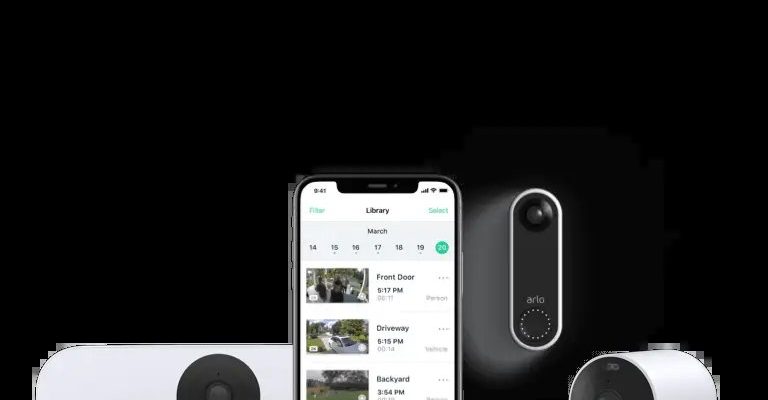
Here’s the thing: smart home devices can be a bit mysterious. You plug them in, sync them with your phone, and hope they do their job flawlessly. But tech can be finicky—batteries run dry, firmware glitches sneak in, or sometimes hardware just fails. That’s where the warranty steps in, like your home’s tech insurance. Let me explain what’s covered, what’s not, and why it matters if you want to keep that smart setup running smooth without surprises.
Understanding the Basics of Arlo’s Warranty Coverage
When it comes to Arlo’s smart home devices, the warranty typically covers defects in materials and workmanship. That basically means if your camera or sensor stops working the way it should because something was broken or faulty from the start, Arlo will step in to fix or replace it. It’s kind of like buying a new car with a manufacturer’s warranty—if the engine or brakes fail early on due to a defect, the company doesn’t just shrug and say “bad luck.” They cover repairs to get you back on track.
Usually, Arlo provides a one-year limited warranty on their devices. That time frame starts ticking from the moment you buy the device, so keep your receipt handy. Honestly, a year might fly by, but most hardware issues tend to show up early rather than years later. This warranty is there to protect you during that critical first year when you’re still getting familiar with syncing, resetting, or pairing your devices.
Here’s something you might not expect: the warranty generally doesn’t cover wear and tear from normal use. For example, if your battery slowly loses life over months or you accidentally drop your camera from a ladder while installing, that’s not usually covered. The warranty focuses on the device’s original quality, not what happens after typical bumps and scrapes.
What’s Included: Hardware Defects and Malfunctions
Let’s dig deeper into what “defects in materials and workmanship” really means for your Arlo gear. Imagine you set up your Arlo Pro camera, just like the manual says, but it refuses to turn on or won’t hold a Wi-Fi connection despite multiple resets. If this issue is due to a factory defect—not user error or network problems—Arlo’s warranty will cover repairing or replacing that camera.
This warranty usually includes the device’s basic hardware parts: the camera body, sensors, lenses, and internal circuit boards. For example, if the microphone in your Arlo doorbell stops picking up sound because of a faulty component, that’s the kind of glitch covered under warranty. The company aims to get your device back into fighting shape without you paying a dime for those kinds of defects.
Another important point is the warranty may cover issues after you try troubleshooting steps like resetting or syncing the device. If you’ve followed the proper code pairing or factory reset instructions, and the problem persists, that strengthens your case for warranty service. It’s a good idea to note down your troubleshooting attempts just in case.
What the Arlo Warranty Doesn’t Cover
Here’s where things get a little tricky, and why reading warranty fine print is a must. The Arlo warranty doesn’t cover damage caused by accidents or misuse—think drops, spills, or extreme weather exposure if your device isn’t rated for it. For instance, leaving your Arlo camera outside during a hurricane, when it’s only designed for mild weather, usually isn’t covered.
Battery issues are another area to watch. You might notice your Arlo device’s rechargeable batteries losing capacity over time, which is normal for any battery-powered gadget. Unfortunately, batteries aren’t usually covered under warranty unless they’re proven to be defective right out of the box. So if your battery life drops after several months or a year, you might need to replace it yourself.
Additionally, any damage from unauthorized repairs, modifications, or using non-Arlo accessories typically voids the warranty. If you’ve ever tried to open your device to fix something or paired it with third-party hubs that aren’t officially supported, be prepared that Arlo might not honor the warranty in those cases.
How to Make a Warranty Claim with Arlo
You might be wondering how the process even works if you need to claim your warranty. It’s actually pretty straightforward but does require some patience. First, make sure you have your purchase receipt or proof of purchase handy—that’s your ticket to getting help.
Once you’re ready, head over to Arlo’s official website or contact their customer support. You’ll likely need to describe the problem in detail, including the model number and when you bought the device. Sometimes, they’ll ask you to perform basic troubleshooting steps—like resetting or syncing your device again—to ensure the problem isn’t something simple.
If the issue qualifies for warranty service, Arlo will usually offer a replacement device or repair service. Shipping costs can vary depending on your location and the type of service. Here’s a quick reminder: always save any communication or case numbers you get from support, just in case you need to follow up or escalate the issue later.
Why Understanding Your Warranty Matters for Your Smart Home
Honestly, warranties can feel like annoying paperwork, but knowing the details can save you a lot of headaches. Your Arlo smart home devices are investments in your security and peace of mind. When something stops working, knowing what’s covered—or not—helps you decide quickly whether to contact support, try troubleshooting, or consider a new purchase.
Plus, if you’re managing multiple devices with different warranties and expiration dates (maybe some from Arlo and others from different brands), a clear understanding helps avoid surprise repair bills. For example, universal or third-party cameras might have very different warranty terms than your Arlo gear, so don’t mix them up.
Keep in mind, smart home gadgets are often part of a bigger ecosystem. Syncing your devices with your phone or home hubs relies on seamless hardware and software working together. If a defective Arlo device causes troubleshooting headaches—like constant disconnects or failed pairing—it’s nice to know you’re covered by the warranty to get you back on track.
Extended Warranty and Protection Plans: Are They Worth It?
You might be thinking, “What if I want coverage beyond the basic one year?” Arlo sometimes offers extended warranty or protection plans that cover your devices for longer, including things like accidental damage protection. These plans come at an extra cost but offer peace of mind for those who rely heavily on their smart home setup.
If you’re someone who’s a bit clumsy with your devices—maybe the kids like to tinker with the cameras—or if your smart home devices are placed in tricky locations, an extended plan can be a smart move. It’s kind of like buying insurance for a phone or laptop; yes, you hope you don’t need it, but when you do, it feels like a lifesaver.
Before signing up, read the plan details carefully. Some cover batteries, accidents, and even theft, while others stick to hardware defects only. Compare the cost of the plan to the price of a new device or repair to decide if it’s worth it for you.
Wrapping It Up: What You Really Need to Know About the Arlo Warranty
At the end of the day, Arlo’s warranty is there to protect you from unexpected hardware failures during the first year of owning your smart home devices. It covers defects in materials and workmanship but won’t cover things like everyday wear, battery aging, or accidental damage. Knowing this helps set realistic expectations so you don’t get caught off guard if something goes wrong.
If you keep your purchase details safe, follow simple troubleshooting steps, and reach out to Arlo support when needed, the warranty can definitely be a helpful safety net. Just remember, it’s not magic. Treat your devices with care, understand what you’re covered for, and you’ll get the most from your smart home investment.
So next time you’re syncing or pairing your Arlo camera or fiddling with battery replacements, think about your warranty like a backup friend—ready to jump in when the tech gremlins strike, but not there to cover every little hiccup life throws your way.
